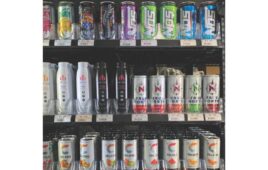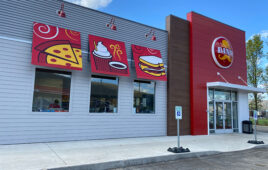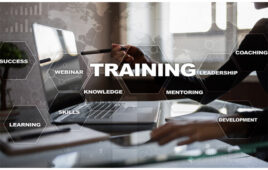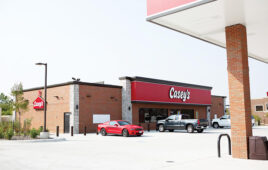 As loyalty programs evolve, they’re working to reach customers in a more personalized, consumer-centric way.
As loyalty programs evolve, they’re working to reach customers in a more personalized, consumer-centric way.
By Brad Perkins, Contributing Editor
A successful loyalty program comes in many forms. It can be a physical card, a mobile app or a credit card associated with a program. It can involve points, free items and special deals. But, what it absolutely needs is customer appeal.
“To be successful and meet the changing needs of the guest, loyalty programs have to be adaptable,” said Tyler Tanaka, director of digital and innovation at Pilot Flying J. “If something was working before but isn’t working now, it is important to walk away and try something new.”
Loyalty programs have long been a source of enticing and keeping customers. And while they began with just the basics of earning a set goal based on spending, they have expanded to include segmentation, customization and choice.
“Loyalty programs have their beginnings in the airline, hotel and banking industries,” said Bill Hanifin, practice leader, customer engagement and loyalty, at Impact21. “Early adopters in these industries had success with these ‘spend and get’ models. But to connect with today’s highly-informed and digitally-connected customer, loyalty programs need to be transparent, accessible and experiential.”
This means that as customers become more engaged, they desire greater flexibility and ease of achieving and redeeming rewards as well as the ability to easily understand the rewards and program terms.
“Thanks to ever-increasing consumer demands, loyalty programs have evolved to become more personal and more immediate than ever before,”said Sheila Murray, COLLOQUY editor-in-chief and associate vice president of marketing, Global Solutions, LoyaltyOne.
“The influx of customer data and many sophisticated ways of analyzing it have allowed retailers to begin shifting from generic, one-size-fits-all rewards, sales and offers to the ability to provide customers with personalized discounts based on factors like their most commonly bought products. All of the data at retailers’ fingertips has also led to more timely communications and offers based on customer shopping patterns or important milestones like birthdays or anniversaries.”
It’s that customer-centric approach that breeds success, according to Tanaka.
“It is important to personalize offerings in order to better accommodate and reach our broad base of guests,” Tanaka said. “We are working to be more targeted with our offerings in order to deliver the one-to-one personalization that we are striving to offer our guests. For example, over the road drivers, regional drivers and RV customers all have very different needs, which change along their journey. Our myRewards offers and incentives need to reflect those differences and offer value to each of those guest types.”
GETTING STARTED
In the two years that Macfood Mart, which operates four stores in Indiana, has offered a rewards program, it has learned that customers enjoy having options.
“We have seen great success with our clubs—particularly any club that involves caffeinated beverages,” said Melinda McDonald, media coordinator at Macfood Mart.
“People really like the versatility of our program. For every gallon you pump or for every dollar you spend in-store, you earn two points that you can spend just like cash. We don’t pick the prizes, the customers do.”
For Quicklee’s, a 15-store chain in upper New York, the desire to gauge where and when their customers shop led to a three-year brand development effort launched in 2017.
“We felt we were missing something that successful retailers were offering—a customer rewards program designed to build customer loyalty and retain a larger share of the market,” said Ken Perelli, Quicklee’s vice president.
The goal was to make a stop at Quicklee’s more rewarding by allowing customers to earn points on any purchase except lottery tickets. The points are available for use for pump or in-store purchases and also feature random bonus points for swiping the rewards card, birthday deals and monthly drawings for gift certificates.
“We believe that our rewards program gives the most options and flexibility to our customers by allowing them to use their loyalty rewards on anything in our stores, not just the high margin items,” Perelli said.
In building or expanding a program, it is important to listen to both your data and your customers. While programs should be easy to understand, the ability to personalize and customize programs with specials and bonuses can add up.
“Always think about simplicity and sustainability first,” McDonald said. “If customers don’t ‘get’ the program, they will abandon ship quickly. Sustainability is also important.
Don’t think of offering great deals today. Think of offering enticing deals every month. In fact, monthly seems to be the sweet spot for us. We’ve learned that one-day deals aren’t always as successful as we want. Deals that last two or three months become the new norm and people are unhappy when we take them away. One month is just right.”
Adding in features that target specifics is important. For example, MacFood Marts changes bonus point items monthly but also targets seasonality by offering additional bonus points based on the season, or a holiday or other promotion.
“We may only make one or two changes a year,” said McDonald. “Typically, our changes come from our managers. I thought our Monster program was going great, but when two managers told me that many customers were asking for a Rockstar program, I thought it was a good opportunity to expand our offerings.”
BUSINESS BOON
Pilot Flying J’s features include items targeted to their main demographics.
“The myRewards points program, which is primarily targeted to professional drivers, has been very successful with high engagement,” said Tanaka. “In addition to our points program, myRewards includes fuel discount and incentive programs, coffee club, shower program and more. Most recently, the launch of myOffers has been a huge success, providing myPilot app users with targeted digital offers and exclusive deals that can be redeemed in-store.”
Redeeming rewards quickly and often is important to deriving value. Loyalty programs that meet customer needs can bring in repeat visits from customers who may not have visited more than once or purchased more than gas.
“The features that work best are the ones that deliver true value for members,” Murray said. “When done well, a loyalty program can be a driver for increased spend and greater profit, but neither can be achieved if your customers don’t feel it’s worth their time to participate.”




